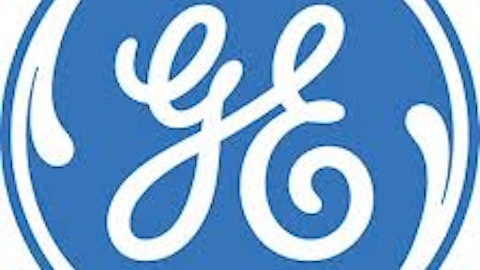When a company misses top and bottom line expectations and lowers its outlook, its stock usually plunges. However, medical device manufacturer Stryker Corporation (NYSE:SYK) appears to be immune to such concerns, and its stock has been flirting with 5-year highs daily despite reporting disappointing second quarter earnings that were plagued by a big product recall. Why are investors so optimistic regarding Stryker’s future growth prospects? Let’s take a closer look and find out.
A sour second quarter

Most of its bottom line decline was attributed to its hip implant recall, which cost Stryker Corporation (NYSE:SYK) $170 million during the quarter.
A costly recall
A year ago, Stryker Corporation (NYSE:SYK) recalled its Rejuvenate Modular and ABG II Modular-Neck Hip Stems, after the company discovered that the metal parts of the two products could corrode and spread tiny metallic shards into a patient’s bloodstream. Several patients suffered tissue and bone death along with device failure at the implant site, which caused waves of lawsuits over the past year.
Despite this legal trouble, Stryker Corporation (NYSE:SYK)’s Reconstructive business segment, which produces hip, knee, foot and ankle implants, reported a 5.6% increase in revenue to $979 million, accounting for 44.3% of the company’s top line. Sales of hip implants rose 6% both domestically and internationally, a notably lower rate than sales of its knee, foot and ankle implants, which all rose at double digit rates.
Other segments continue growing
Stryker’s other businesses posted healthy growth during the quarter. Its MedSurg business, which produces surgical tools such as the 1488 camera and System 7 power tools, reported a 4.2% rise in revenue to $819 million (37% of sales), exhibiting stronger growth overseas. However, the MedSurg division was also weighed down by the recall of its Neptune waste management system last September, which the FDA claims was sold without agency clearance, eventually causing the death of a patient when a chest drainage tube failed after surgery.
Stryker’s third largest business, its Neurotechnology and Spine segment, is its fastest growing one, reporting 5.4% year-over-year revenue growth to $414 million. Sales of Neurotechnology devices surged 9.6% domestically and 3.5% internationally, and spinal implant sales also climbed 2.7% domestically and 11% internationally. The division’s global growth was aided by its acquisition of Trauson, the largest trauma device manufacturer in China and a major competitor in the spinal implant segment.
A look at Stryker’s industry peers
In my opinion, Stryker shareholders consider the hip and waste management system recalls to be isolated, unfortunate events. Moreover, Stryker still managed to report strong growth across all of its segments in spite of these problems, which means that its bottom line could increase substantially once these troubles are behind it.
Investors haven’t been as kind to other medical device manufacturers, however.
Medical device manufacturer ICU Medical, Incorporated (NASDAQ:ICUI), best known for its IV infusion devices, catheter tubes, and protective oncology gear for caregivers, recently fell after the company reported bleak second quarter earnings that missed analyst estimates.
For the quarter, ICU Medical, Incorporated (NASDAQ:ICUI) earned $0.48 per share, or $7.4 million, a 19.5% year-over-year decline. Revenue rose 1.8% to $78.7 million. The company also lowered its outlook for the rest of the year. Unlike Stryker, however, ICU’s bottom line wasn’t marred by recalls, although it pulled a 16-year old catheter connector off the market earlier this year. Rather, ICU attributed its decline to “current business trends in certain market segments.”
In particular, a 19.1% year-over-year sales decline in critical care products, which account for 16% of ICU’s total sales, offset a 31.7% gain in oncology products, which comprised 12% of its top line. ICU Medical’s smaller size and less diversified product portfolio also appeared to work against it last quarter.
Zimmer Holdings, Inc. (NYSE:ZMH) competes directly with Stryker in several business segments. It produces orthopaedic reconstructive, spinal implants, trauma devices, dental implants, and other surgical products. Zimmer notably acquired Knee Creations in May to compete against Stryker’s knee implant products.
Zimmer Holdings, Inc. (NYSE:ZMH) reported 4.3% earnings growth last quarter as revenue declined 0.2%. Zimmer Holdings was also hit by several recalls over the past year for its hip implants and spinal surgery instruments, which prompted a wave of lawsuits.
Zimmer is scheduled to release its second quarter earnings on July 25, and its results should offer up some interesting comparisons to Stryker, since they share similar business models and face the same problems.
Is bigger better?
For a bigger, more diversified healthcare portfolio, investors can also consider General Electric Company (NYSE:GE). Although most investors commonly associate GE with industrial equipment, aerospace technology and household products, GE actually has one of the largest and fastest growing healthcare divisions in the world, which accounts for 12.8% of the company’s top line.
GE Healthcare manufactures a wide variety of products, including diagnostic imaging products, surgical tools, clinical care products (including baby incubators and respirators), and a biotech arm. Last quarter, GE’s Healthcare division’s profit rose 4.6% year-over-year, but its revenue dipped 0.2% to $4.49 billion. Total product orders, however, climbed 9% from the previous year.
Therefore, GE is a sound choice for investors who want some exposure to the healthcare industry without investing themselves too heavily in a single business which is vulnerable to costly recalls or sluggish trends in certain segments. However, General Electric Company (NYSE:GE) is unlikely to experience the rapid growth that Stryker has experienced over the past year due to its larger size.
The Foolish Bottom Line
All four companies mentioned in this article have outperformed the S&P 500 over the past year.
This means that despite facing recalls and a slowdown across the industry, investors are still optimistic that these medical device businesses will continue growing. A brief glance at current valuations, however, reveals that Stryker might be getting a bit ahead of itself.
| Stryker | ICU Medical | Zimmer Holdings | General Electric | |
| Trailing P/E | 23.81 | 25.66 | 19.24 | 18.40 |
| 5-year PEG | 2.08 | 2.34 | 1.59 | 1.36 |
Source: Yahoo Finance, 7/23/2013
A stock that is trading at 5-year highs with a PEG of 2.08 and a trailing P/E of 23.8 – a premium compared to an industry average PEG of 1.47 and P/E of 23.3 – could fall fast if the market stumbles. Therefore, investors might be better off waiting for a pullback with these stocks, or bank on a more reliable, diversified company like General Electric instead.
Leo Sun has no position in any stocks mentioned. The Motley Fool owns shares of General Electric Company and Zimmer Holdings.
The article Why Aren’t Investors Worried About This Medical Devices Maker? originally appeared on Fool.com and is written by Leo Sun.
Leo is a member of The Motley Fool Blog Network — entries represent the personal opinion of the blogger and are not formally edited.
Copyright © 1995 – 2013 The Motley Fool, LLC. All rights reserved. The Motley Fool has a disclosure policy.






